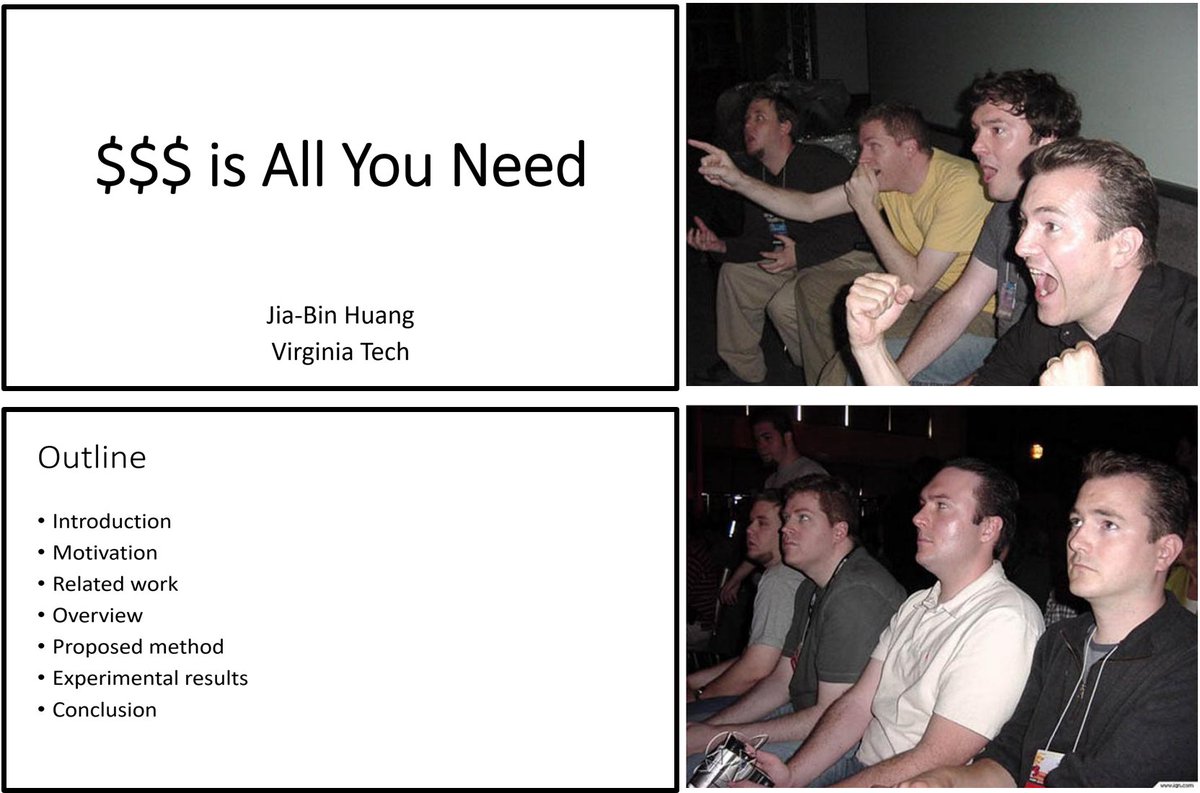
Writing Related Work
I enjoy reading/writing the related work section of a paper. It helps organize prior research and put the contributions of the work in proper context.
But HOW? Check the thread below👇
I enjoy reading/writing the related work section of a paper. It helps organize prior research and put the contributions of the work in proper context.
But HOW? Check the thread below👇
*Divide and conquer*
No one likes to read 1-2 pages full of texts. Identify a couple of important “topics” relevant to your research. Add paragraph titles (\paragraph{}) so that it’s easy to navigate.
No one likes to read 1-2 pages full of texts. Identify a couple of important “topics” relevant to your research. Add paragraph titles (\paragraph{}) so that it’s easy to navigate.
*Topic*
For each topic, write about
1) the TRAJECTORY of the research progress as a story and
2) the RELATIONSHIP of prior art and this paper.
For each topic, write about
1) the TRAJECTORY of the research progress as a story and
2) the RELATIONSHIP of prior art and this paper.
*Trajectory*
Describe what the problem is, why is it challenging, and what people have done in this field to tackle the problem? Connect existing work into a clear research trajectory.
Describe what the problem is, why is it challenging, and what people have done in this field to tackle the problem? Connect existing work into a clear research trajectory.
*Avoid laundry list*
Organizing and writing a topic as a clear trajectory is not easy. So instead of learning what to write, it’s often helpful learning what NOT to write.
No “authors A did blah blah. Author B did blah blah. Author C”. Focus on the work, not the people.
Organizing and writing a topic as a clear trajectory is not easy. So instead of learning what to write, it’s often helpful learning what NOT to write.
No “authors A did blah blah. Author B did blah blah. Author C”. Focus on the work, not the people.
*Don’t use citations as nouns*
Your sentences should still be complete and correct even if you remove all the parenthetical citations.
Your sentences should still be complete and correct even if you remove all the parenthetical citations.
*Don’t just describe, RELATE it*
In each topic, articulate the relationship between prior work and yours. Ex:
Our work is similar as we also …
Our work differs in …
Unlike/in contrast to …, we …
In each topic, articulate the relationship between prior work and yours. Ex:
Our work is similar as we also …
Our work differs in …
Unlike/in contrast to …, we …
*Identifying the key differences*
Try finding ONE key contrastive concept to separate your work from others. Highlight them with \emph. Ex:
- Multiple -> Single
- Content-agnostic -> Content-aware
- Static -> Dynamic
Try finding ONE key contrastive concept to separate your work from others. Highlight them with \emph. Ex:
- Multiple -> Single
- Content-agnostic -> Content-aware
- Static -> Dynamic
*Be respectful*
Do not trash prior work. The authors may likely be your reviewer…
Do not trash prior work. The authors may likely be your reviewer…
*Be generous*
Make sure that you cover all the important references. Giving people credits does not make your work less worthy.
Make sure that you cover all the important references. Giving people credits does not make your work less worthy.

That’s all! Hope this is helpful.
What are your favorite tips when writing the related work?
What are your favorite tips when writing the related work?
I just added a thread of Related Work examples I like. Check it out!
https://twitter.com/jbhuang0604/status/1417313410530758659
• • •
Missing some Tweet in this thread? You can try to
force a refresh










